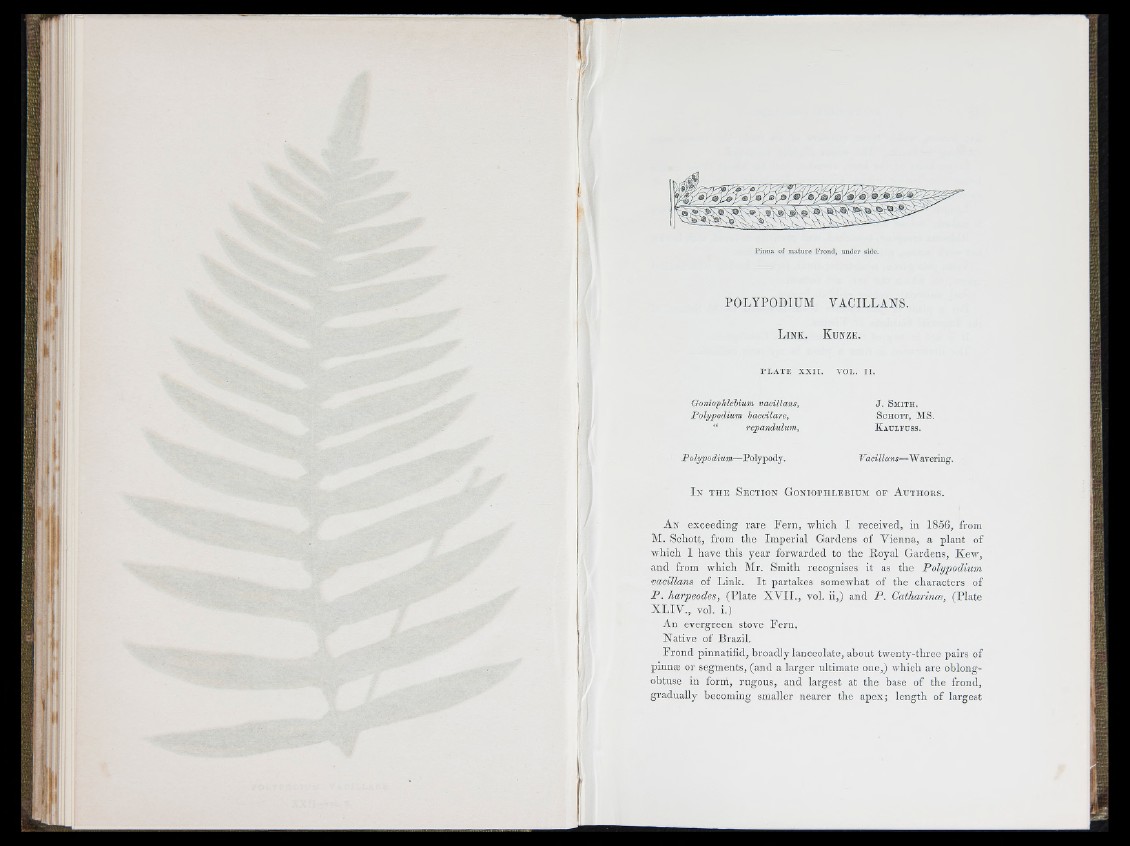
POLYPODIUM VACILLANS.
L i n k . K u n z e .
P L A T E X X I I . V O L . I I .
Goniophlehium vacillans,
P o lypodium haccilare,
“ repandulum.
J . S m i t h .
S c h o t t , MS.
K a u l f u s s ,
P o lypodium—Polypody. Vacillans—Wavering.
I n t h e S e c t i o n G o n i o p h l b b i u m o r A u t h o r s .
A n exceeding ra re F e rn , wliich I received, hi 1856, from
M. Schott, from the Im p e ria l Gardens of Vienna, a plan t of
which I have this y ear forwarded to the Royal Gardens, Kew,
an d from which Air. Smith recognises it as the P olypodium
vacillans of L in k . I t partakes somewhat of the characters of
P . harpeodes, (P la te X V I I ., vol. ii,) and P . Catharince, (Pla te
X L IV ., vol. i.)
An evergreen stove F e rn .
Native of Brazil.
F ro n d pinnatifid, broadly lanceolate, about twenty-three pairs of
pinnæ or segments, (and a larger ultimate one,) which are oblong-
obtuse in form, rugous, and largest at the base of the frond,
gradually becoming smaller nearer the apex; length of largest